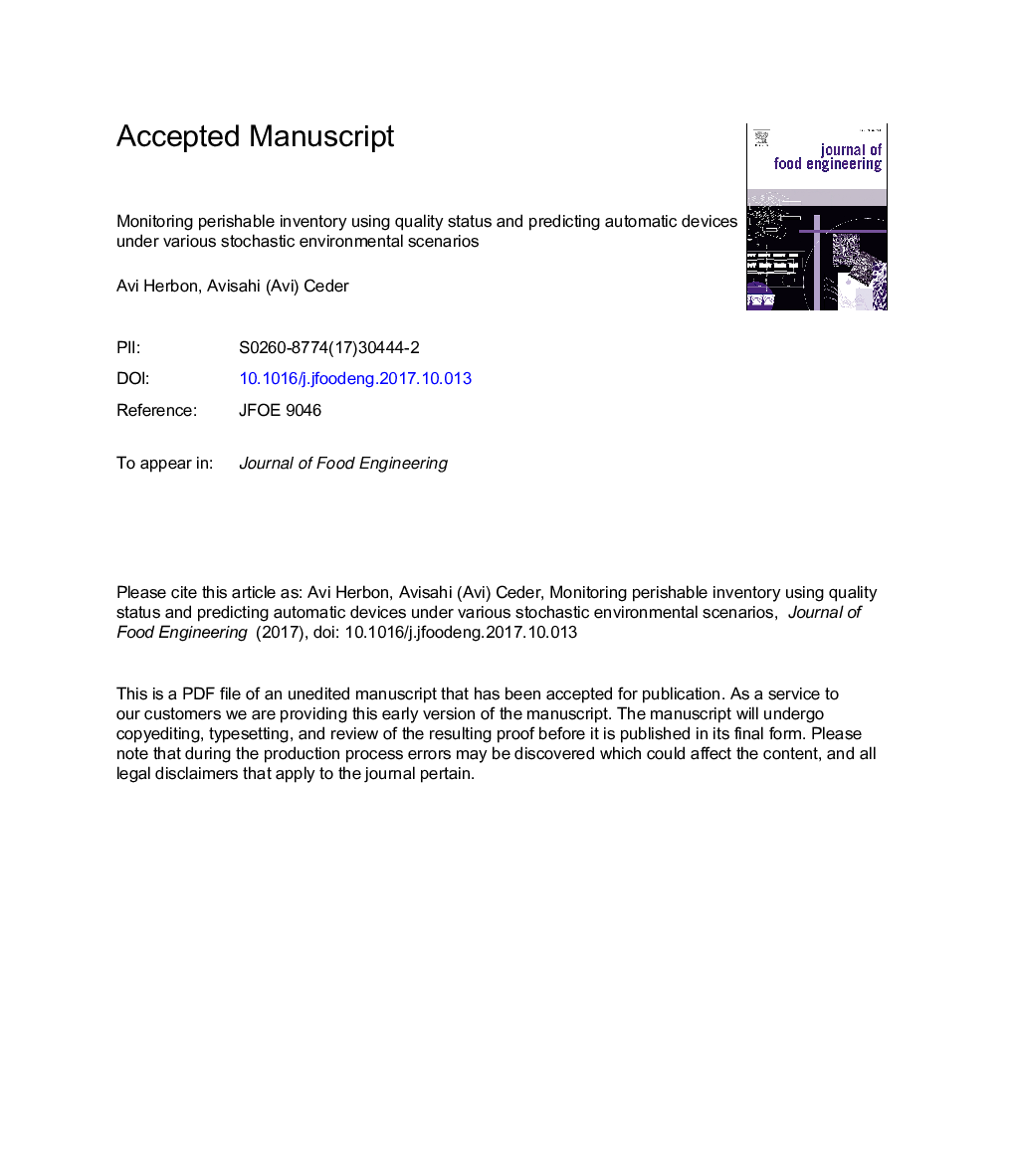| Article ID | Journal | Published Year | Pages | File Type |
|---|---|---|---|---|
| 6664740 | Journal of Food Engineering | 2018 | 38 Pages |
Abstract
Time-temperature-indicator (TTI)-based automatic devices (ADs) provide online information to incoming consumers regarding the expected shelf-life of products to be purchased. In this work, we extend the scope of simulation experiments conducted for solving a perishable inventory model, presented by the authors in previous work (Herbon et al., 2012). The model incorporates both dynamic pricing and TTI-based ADs for monitoring a perishable inventory system. The results have potential application in competitive markets such as the pharmaceutical and food industries. The current extension presents innovative results through the use of a random search algorithm combined with experimental design. Among the new scenarios explored in this study are different levels of the following: price-sensitivity; utility variability; expiry prediction error; demand variability; expected shelf-life; variability of shelf-life. It is found that the expected shelf-life and its variance significantly affect expected profits. Applying TTI-based ADs substantially mitigates the negative effect of the variability of shelf-life.
Related Topics
Physical Sciences and Engineering
Chemical Engineering
Chemical Engineering (General)
Authors
Avi Herbon, Avisahi (Avi),
